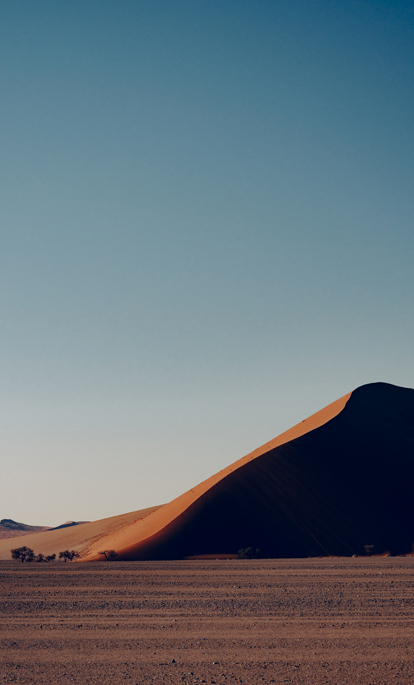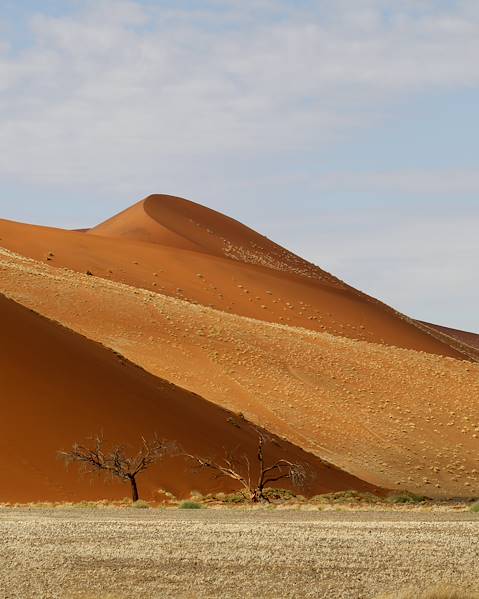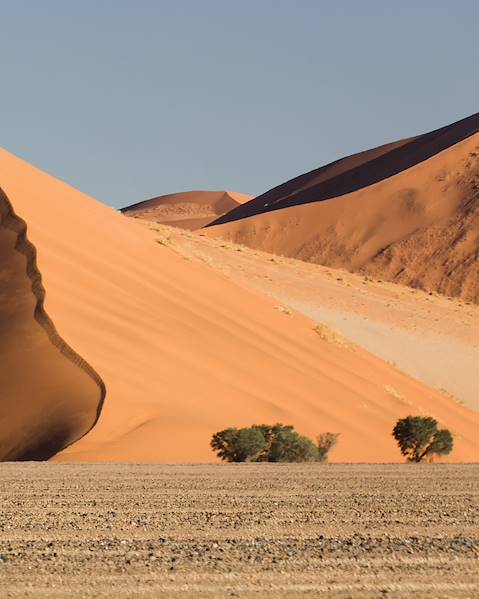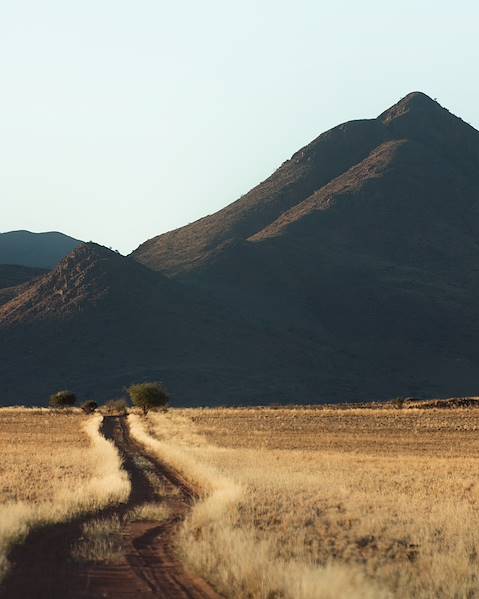Namibia is one of the world’s most diverse and dramatic destinations. Tucked away in the south-western corner of Africa, it’s a country full of sublime sights for both savouring and photographing. The Namib Desert is one of Namibia’s most recognisable views, with its towering sand dunes (including the famed Sossusvlei) that form a captivating scene and change with the shifting light. From the world’s tallest dunes and the hauntingly beautiful Skeleton Coast to the vast Fish River Canyon and wildlife-rich national parks, the geography of Namibia is rare and wide ranging. Read on to learn all about this spectacular country where contrasts reign supreme.
Overview
Covering more than 320,000 square miles, Namibia shares land borders with Angola to the north, Botswana to the east and South Africa to the south and east. The Caprivi Strip juts out to the northeast to touch Zimbabwe and Zambia. When it comes to the geography of Namibia, the country can be divided into four distinct regions:
- The Namib Desert forms a 50- to 70-mile-wide belt along the entire coastline.
- A semiarid and mountainous plateau, varying in altitude from 3,000 to 6,000 feet, covers the central interior including Windhoek, the capital city. At an altitude of 5,600 feet, Windhoek is surrounded by sparsely vegetated mountains in a landscape that resembles Arizona or New Mexico.
- The low-lying eastern and south-eastern plains are extensions of the dry Kalahari Region of Botswana and South Africa.
- The northern, bush-covered plains include the relatively high rainfall areas of the Kavango and the eastern Caprivi.
The Namib Desert: Towering Sand Dunes
The Namib Desert stretches along the country’s entire coastline, making it an integral part of the geography of Namibia. Perfectly formed sand dunes press up against a deserted stretch of coast and continue inland as far as the eye can see. These towering dunes – some of which are 1,000 feet high and more than 20 miles long – create a mesmerising landscape of shifting shapes and shadows. In fact, the Namib’s distinctive red hue is a coating of iron oxide, which becomes more prominent as the desert stretches away from the sea. Having endured arid or semi-arid conditions for roughly 55-80 million years, the Namib is almost certainly the oldest desert in the world and contains some of the planet’s driest regions – only western South America's Atacama Desert challenges it in terms of age and aridity. Yet wildlife still manages to thrive here, despite it being almost completely devoid of water. The Namib’s unique flora and fauna includes the resilient Welwitschia plant and the elusive desert-adapted elephants. And, against all odds, a small population of desert lions live along the sand dunes and barren mountains of the Kunene region, in northern Namib. Exploring the desert offers a chance to witness the stark beauty and survival strategies of life in extreme conditions.
The Skeleton Coast: The World’s Largest Ship Cemetery
The Skeleton Coast, part of the Namib Desert, is a hauntingly beautiful stretch of coastline. Named for the whale bones and the hundreds of broken ships that litter its beaches, the Skeleton Coast now hides its infamous graveyard beneath the sand. This desolate region is characterised by misty mornings, which clear to reveal towering dunes and rocky outcrops, making for moody and dramatic visuals. Despite playing host to the ghosts of ships past, the Skeleton Coast is teeming with wildlife. Incredibly diverse, it has more near-endemic species than any other desert in the world. Black rhinos, jackals, giraffes, seals, oryx, kudus and zebras are just some of the species inhabiting this wilderness. Elephants are sometimes seen wading into the waves and various shark species patrol the waters. However, humans are few and far between. The Skeleton Coast is a photographer’s dream, offering breath-taking vistas and a sense of isolation that challenges any pre-conceived notions of what Africa looks like.
Fish River Canyon: A Geological Marvel
Fish River Canyon is one of Namibia’s most impressive natural wonders. Carved by the Fish River over millions of years, this colossal canyon stretches for around 100 miles, making it second in size only to the Grand Canyon. Its dramatic cliffs, rugged terrain and meandering river create a breath-taking sight. Hiking the Fish River Canyon is a challenging but rewarding adventure, allowing visitors to witness the raw power of nature and experience the tranquillity of this remote region.
Etosha National Park: A Wildlife Haven
One of the largest game reserves in the world, the sprawling Etosha National Park in northern Namibia boasts some of the planet’s best wildlife watching. Named after the park's massive salt pan (Etosha means 'Great White Place'), this bare and barren wilderness is home to countless animal species including mammals, reptiles and birds. During the dry season, the pan’s water holes become magnets for wildlife, creating incredible opportunities for game viewing. Indeed, Namibia is home to one-fifth of the world's total free roaming cheetah population. Exploring Etosha National Park promises an unforgettable journey among Namibia’s natural diversity.
Brandberg Mountain: A Sacred Peak
Brandberg Mountain, Namibia’s highest peak, holds great cultural and spiritual significance for the local Damara people. This ancient granite massif is home to thousands of rock paintings, including the famous ‘white lady’. The mountain’s unique geology and diverse flora make it a fascinating destination for hikers and nature enthusiasts. Scaling the Brandberg also offers panoramic views of the surrounding landscape, as well as the chance to connect with the rich cultural heritage of Namibia.
















